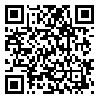دوره 6، شماره 2 - ( 4-1397 )
جلد 6 شماره 2 صفحات 58-53 |
برگشت به فهرست نسخه ها
Download citation:
BibTeX | RIS | EndNote | Medlars | ProCite | Reference Manager | RefWorks
Send citation to:



BibTeX | RIS | EndNote | Medlars | ProCite | Reference Manager | RefWorks
Send citation to:
Inaloo S, Foroughiniya Z, Haghbin S, Farkhondeh T. Pediatric Stroke in Southern Iran; Clinical Presentations, Etiologies and Outcomes: A Case-Series and Review of Literature. J. Pediatr. Rev 2018; 6 (2) :53-58
URL: http://jpr.mazums.ac.ir/article-1-194-fa.html
URL: http://jpr.mazums.ac.ir/article-1-194-fa.html
Pediatric Stroke in Southern Iran; Clinical Presentations, Etiologies and Outcomes: A Case-Series and Review of Literature. Journal of Pediatrics Review. 1397; 6 (2) :53-58
چکیده: (5862 مشاهده)
Background: Pediatric stroke is defined as rapid developing clinical signs of focal (or global) disturbance of cerebral function without any apparent cause other than of vascular origin lasting for 24 hours or longer in the ages of 1 month to 18 years. It is relatively rare in children, however, it can lead to significant mortality and morbidity.
Objectives: The present study aimed to identify clinical presentations, etiologies, and outcomes of pediatric stroke in southern Iran.
Methods: This case-series study included all patients that were diagnosed with a pediatric stroke and admitted to the Pediatric Neurology ward at Namazi hospital in Shiraz, Iran, from May 2009 through March 2012.
Results: During the study period, 40 newly diagnosed patients (27 males and 13 females) between the ages of 10 months and 18 years old were identified. The most prevalent referring symptoms were hemiparesis and hemiplagia (65%), seizures (45%), speech difficulties (42.5%), and altered mental status (35%). A known single etiology was identified in 82.5% of patients. The most common single risk factor was cardiac abnormalities with 30% frequency, followed by idiopathic and vascular with 17.5%. The outcome of pediatric patients revealed incomplete recovery with moderate neurological deficits (45%) including residual epilepsy (15%), speech difficulties (15%), and behavioral dysfunction (7%), which indicate their need for help in some of their daily activities.
Conclusions: Stroke in southern Iranian pediatric patients demonstrated different patterns of causes and risk factors with similar clinical presentations and outcomes.
Objectives: The present study aimed to identify clinical presentations, etiologies, and outcomes of pediatric stroke in southern Iran.
Methods: This case-series study included all patients that were diagnosed with a pediatric stroke and admitted to the Pediatric Neurology ward at Namazi hospital in Shiraz, Iran, from May 2009 through March 2012.
Results: During the study period, 40 newly diagnosed patients (27 males and 13 females) between the ages of 10 months and 18 years old were identified. The most prevalent referring symptoms were hemiparesis and hemiplagia (65%), seizures (45%), speech difficulties (42.5%), and altered mental status (35%). A known single etiology was identified in 82.5% of patients. The most common single risk factor was cardiac abnormalities with 30% frequency, followed by idiopathic and vascular with 17.5%. The outcome of pediatric patients revealed incomplete recovery with moderate neurological deficits (45%) including residual epilepsy (15%), speech difficulties (15%), and behavioral dysfunction (7%), which indicate their need for help in some of their daily activities.
Conclusions: Stroke in southern Iranian pediatric patients demonstrated different patterns of causes and risk factors with similar clinical presentations and outcomes.
نوع مطالعه: Case Report and Review of Literature |
دریافت: 1396/4/29 | پذیرش: 1396/8/13 | انتشار: 1397/4/24
دریافت: 1396/4/29 | پذیرش: 1396/8/13 | انتشار: 1397/4/24
| بازنشر اطلاعات | |
 |
این مقاله تحت شرایط Creative Commons Attribution-NonCommercial 4.0 International License قابل بازنشر است. |



